Now that the iPhone 15 has been on the market for a little while, I genuinely say that Apple should have moved to a USB-C charger years ago. While this is not the greatest feature, it has a very impressive camera, great performance, and gorgeous color variations.
As a result, the iPhone 15 is finally one of the best smartphones available. Especially if you’ve been waiting for Apple to ditch the decade-old Lightning cable.TheiPhone15isfinallyone of the best smartphones, especially if you’ve been waiting for Apple to get rid of the decade-old Lightning cable.
Apple iPhone 15: Display
Speaking of displays, Apple has done it again: the iPhone15 has a resolution of 2,556 x 1,179, which is not the most stunning looking, but Apple has once again tuned the display to extremely accurate and bright colors. To be clear, there are smartphones with higher resolutions, and some models have extremely high refresh rates.
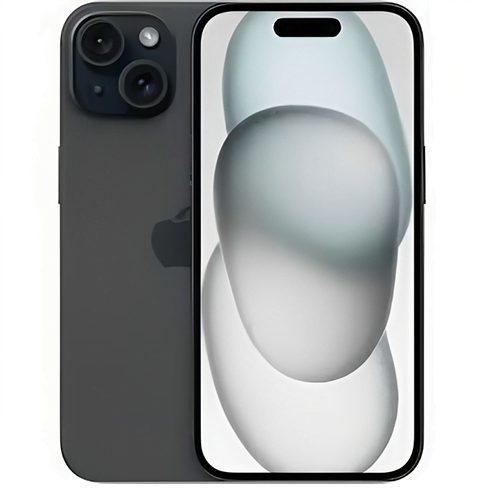
I regularly pull out my phone to watch a YouTube video or read a comic book, and while the staggering contrast ratio of 2,000,000:1 makes blacks extremely dark, the peak brightness outdoors is 2000 nits, so bright are as in any scene appear to pop out of the display. The brightest parts of any scene appear to pop out of the display.
Much has been said about HDR and how it will truly transform the content we consume, but when a display is as good at displaying HDR content as the iPhone 15is, it is truly in a league of its own.
Apple iPhone 15: Design
In terms of overall silhouette, the iPhone 15 is identical to the iPhone 14 and practically identical to the iPhone 13. The overall shape and size of the body may be nearly identical to last year’s, measuring 147.6 x 71.6 x 7.8 mm and weighing 171g, but this year definitely brings a more significant design change with the inclusion of a dynamic island.
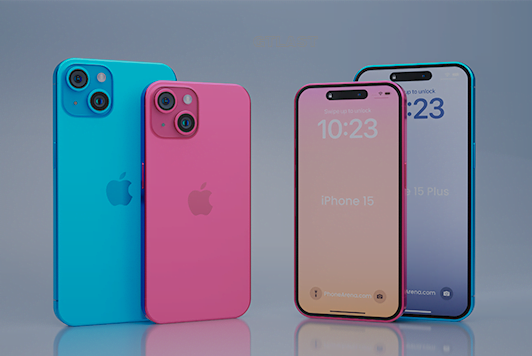
Gone is the imposing display notch on the iPhone 14, and the iPhone 15 features the same imposing display notch as its Pro sibling. Apple calls this a “dynamic island,” and the UI has a number of visual elements specifically designed to “take advantage” of this design feature, such as the notification bubble.
The notch is quite large, but it houses some of the hardware components of Apple’s Face ID system. The selfie camera also has a rather large notch compared to the size of the lens itself. Overall, the dynamic island is quite large, taking up a significant portion of the iPhone 15’s6.1-inch display. Still, it is definitely a more modern look than the previously used notch.
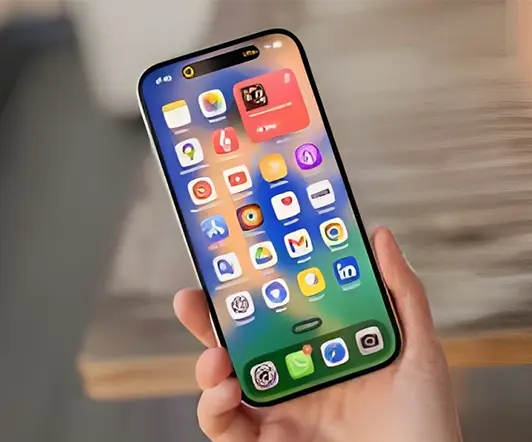
Speaking of large, the bezels on the iPhone 15’s display cannot be called slim. They are perfectly reasonable for a modern device, but definitely larger than those on the Pro model.
Other than that, Apple is sticking with flat displays on all models for another year. This is definitely a deliberate choice and goes against the ongoing trend of curved displays in the Android space, so to speak. Frankly, we personally appreciate flat displays, so much so that some of us in the GSMArena office prefer them.
To shop smart phones and electronic devices
As already mentioned, the overall silhouette of the iPhone 15 remains largely unchanged. The edges of the aluminum frame have been given new contours, making the device easier to handle, in contrast to the sharp edges of the previous version. iPhone is still a glass “sandwich,” with both the front and back panels placed completely flush with the frame in the middle, without a lip. This is definitely a “smart” look.
There is nothing new about the back of the iPhone 15. We like how the slightly different materials and colors of the glass back and camera is land complement each other.
Speaking of colors, Apple has a new color line up for the iPhone 15.Black, blue, green, yellow, and pink. We really like the pink review unit. It is a very soft and exquisites hade of pastel pink. Apple uses a special metallic ion process to inject the color into a single piece of back glass, creating uniformity across the surface. As for the feel, the surface is etched for a subtle matte finish.
Apple iPhone 15: Cameras
The iPhone 15 andiPhone15 Plus have the same number of main cameras (two on the back and one on the front) as last year. This year, however, they feature an all-new 48MP, 26mm, f/1.6 main camera.
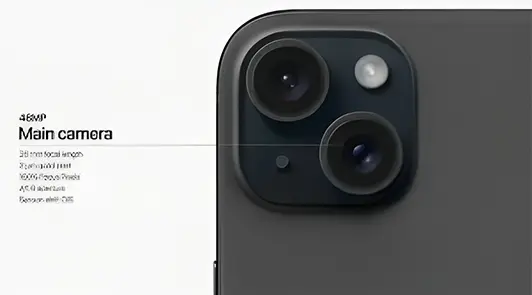
Apple is not in the habit of sharing too much about its camera sensor hardware. We have confirmed that the 48MP camera on the vanilla iPhone 15 and Plus models does not use the same Sony IMX803 sensor found in the iPhone 15 Pro and iPhone 14 Pro models. It is likely a custom-built, different Sony sensor with a stacked design that is said to help with read out speed and low-light performance.
Otherwise, we know that the main camera has 1.0µm pixel sin a Quad-Bayer array. However, Apple has done the math and stacking magic to capture 24MP still images by default. The main camera also has 100% focus pixels and PDAF. It also has sensor-shift OIS for stability and EISf or video capture. The camera is mounted behind an f/1.6 lens.
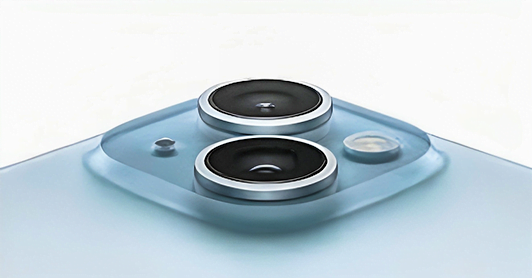
No other details are known about the other camera hardware. iPhone 15 has a 12MP ultra wide, which sits behind an f/2.4 lens. There are no fancy features like autofocus. Autofocus is only available on the Pro model, and the ultra wide can be used as a macro shooter.The12MP,f/1.9 selfie camera, on the other hand, has PDAF. Not only that, it can also take advantage of depth data from the SL 3D sensor on the front for better portraits.
To More Smartphone reviews
The camera interface has toggles for 0.5x, 1x, and 2x.flash, night mode, live photo, photo aspect, exposure compensation, and filters. In video mode, the resolution and frame rate can be changed from the viewfinder.
Portrait mode is available on the main and selfie cameras. However, RAW development is not available on the non-Pro iPhone. What you can choose this year, however, is to shoot at12MP or 48MP, off the new standard resolution of 24MP for the main camera. The former is accessible through the camera app settings, and the latter through the JPEG Max tog le in the camera UI. Samples of the different resolution modes are shown below.
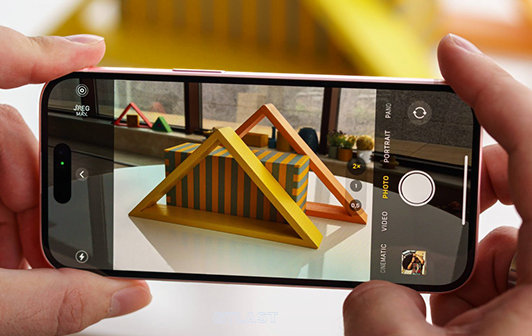
There is a feature called “Photographic Style” that automatically edits each photo on eat a time (e.g., applying different corrections to the subject and background). You can choose from “Standard,” “Rich Contrast,” “Vivid,” “Warm, “and” Cool. Each of these modes can be adjusted to your preference, and you can set your favorite as the default. They are like filters, but more permanent.
Apple iPhone 15: Battery life
The iPhone 15’s battery is 3349 mAh, which is slightly larger than the 3200 mAh of last year’s iPhone 14 Pro model andthe3279mAhofthe vanilla iPhone 14 model. Apple seems to have been optimizing its software and hardware since last year.
In typical Apple fashion, the iPhone 15 delivers great battery life, with an active uses core of 13:20 hours. This is enough to outperform most competitors like Samsung’s Galaxy S23 and Google’s Pixel 8, despite having a significantly smaller battery pack. Cupertino needs to work on durability during calls, but even with that disadvantage, it still manages to shine in the durability department.
Pros
- The design has been subtly modified to make it easier to hold and use.
- Water proof to a depth of 6 meters, industry-leading scratch and shatter resistance of the front glass.
- Very bright OLED screen, HDR10, Dolby Vision, excellent color accuracy, and a more modern dynamic island.
- USB-C is here and we like it.
- Solid battery life for its size.
- Excellent speaker quality.
- Excellent all-around performance.
- Excellent photo and video quality from all three cameras.
- Every iPhone comes with at least 5 years of iOS updates.
Cons
- It is much more expensive than the corresponding Android alternatives.
- The display is 60Hz, there is no Always On option, and the bezels are thicker than the Pro model.
- The charger is not included in the box and charging is not particularly fast.
- Limitations of Apple’s iOS may be off-putting to newcomers to the ecosystem.
- The Ultra Wide does not have a dedicated telephoto camera or autofocus.
Verdict
As much as we would love to offer Android-powered models in place of the iPhone, key statistics show that Apple’s smartphone lineup is now more or less an isolated island. In other words, not many people are jumping unilaterally to Android. As summing that is the case, and as summing that iPhone users will inevitably become iPhone buyer sat some point as well, it almost makes sense to view the iPhone 15 in the context of Apple’s own device choices.
Whatever the historical data, the vanilla iPhone 15 is unlikely to be the most popular of the iPhone15s. That title will probably go to the iPhone 15 Pro Max. That doesn’t mean it is unpopular. Quite the contrary. Apple has one of the most robust market research operations, and if Apple so decides, there will definitely be a spot for the iPhone 15 model in the lineup.
As for innovation, the iPhone 15 brings a lot more to the table compared to its predecessor. The all-new, stunningly bright OLED display is a great advancement, and we appreciate the fact that Apple has finally unified the design into a dynamic is land across all models. Speaking of unification, Type-C was a change we’ve been waiting for. Another big novelty this year would be the new 48MP main camera. Compared to last year’s 12MP camera, it is superior across the board and a marked improvement.
In short, in our view, Apple has once again succeeded in striking a delicate balance between familiarity and meaningful innovation. And as always, the Android realm, while better in hardware offerings and overall value, seems to be almost irrelevant and off point.


